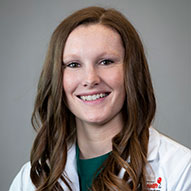Dallas
214-456-7697
Fax: 214-456-7901
Plano
469-303-3000
Fax: 469-303-4520
Frisco
469-303-3000
Fax: 469-303-4520
Prosper
469-303-3000
Fax: 469-303-4520
Bone, joint and muscle infections occur when bacteria or fungi spread to the affected area, often causing pain and inflammation. In children, bone and joint infections usually happen in the long bones of the arms and legs.
214-456-7697
Fax: 214-456-7901
469-303-3000
Fax: 469-303-4520
469-303-3000
Fax: 469-303-4520
469-303-3000
Fax: 469-303-4520
Often referred to as "deep" infections, common forms include osteomyelitis and septic arthritis.
Children’s Health has extensive experience diagnosing and treating bone, joint and muscle infections. Our physicians tailor treatment to your child’s unique symptoms. When diagnosed early, our physicians can usually treat bone and joint infections with antibiotic medication. We can also provide minimally invasive surgery to clear out the infection if necessary.
Osteomyelitis (bone infection): Osteomyelitis is a bacterial infection of a bone . In children, infection in the long bones of the arms and legs are most common. A child with osteomyelitis will be referred to an orthopedist (doctor specializing in treating bone and joint problems) for evaluation and treatment. Treatment can include surgery and intravenous (IV) or oral use of antibiotics.
Septic arthritis (joint infection): Infectious, or septic, arthritis is an infection in one of your child’s joints. The infection usually reaches the joints through the bloodstream. Treating the joint infection promptly is important to prevent it from becoming a chronic, or long-term, disorder. Treatment can include a needle aspiration of the hip joint, surgical drainage, and intravenous (IV) or oral use of antibiotics.
Pyomyositis (muscle infection): Pyomyositis is a bacterial Infection of the skeletal muscles. A child with pyomyositis will be referred to an orthopedist (doctor specializing in treating bone and joint problems) for evaluation and treatment. Treatment can include surgical drainage, and intravenous (IV) or oral use of antibiotics.
Post streptococcal reactive arthritis (PSRA) *: Arthritis of acute onset, symmetric or asymmetric, usually non-migratory, which can affect any joint and is persistent or recurrent. A child with PSRA will be referred to a Rheumatologist (A specialist in the non-surgical treatment of rheumatic illnesses, especially arthritis) for evaluation and treatment.
Children who have infections of their bones, joints or muscles often have the following:
Many children who have bone, joint, or muscle infections have had recent injuries. The symptoms of infection are often masked by those of the injury. Because parents assume the injury will get better over time, it may take them longer to notice the infection.
It is important to bring your child to a doctor immediately if symptoms are not quickly resolving at home.
Our doctors can look for signs of infection with a careful physical examination and by asking questions about symptoms. The key to successful treatment of bone infections and septic arthritis is prompt attention.
Tests that may help confirm a diagnosis and plan your child's treatment include:
Infections are usually caused by bacteria that are present in our normal living environment. The most common bacteria causing bone, joint, or muscle infections in children is Staphylococcus aureus (often referred to as "Staph" infections).
Bacteria can get into the body in a variety of ways. They circulate through the bloodstream until they reach a bone, joint, or muscle. Bacteria then leave the bloodstream and multiply in the bone, joint, or muscle tissues.
Prompt diagnosis and treatment of all infectious disorders involving bone, joint, or muscle helps improve the outlook for your child. When infections are not treated early, they can damage tissues and cause chronic problems.
At Children’s Health, we provide comprehensive care for a range of orthopedic disorders using a multidisciplinary approach that addresses all your child’s needs, from diagnosis through treatment and recovery. Our pediatric orthopedic physicians will create a personalized treatment plan for your child.
Treatment options include:








Bacteria can get in the body in a variety of ways. They circulate through the bloodstream until they reach a bone, joint, or muscle. Bacteria then leave the bloodstream and multiply in the bone, joint, or muscle tissues. Infections are usually caused by bacteria that are present in our normal living environment. The most common bacteria causing bone, joint, or muscle infections in children is Staphylococcus aureus (“staph” infections).
Once treated, osteomyelitis usually doesn’t cause long term problems. Children aren’t likely to develop the same infection again. Basic hygiene should always be performed.
Restricting your child from physical activities helps to protect bone that is weakened by infection or surgical intervention. Immobilization with casts or splint of affected bone and joints also helps to protect the extremity and reduce further inflammation, especially in the early stages of treatment.
Complete all antibiotics as prescribed and follow-up with your orthopaedic surgeon to ensure full resolution of the infection. Stopping the antibiotics early may lead to a recurrence of infection, partially treated infection, or drug-resistant bacteria.
Staphylococcus Aureus is type of bacteria that about 30% of the population has in their nose or on their skin. Most of the time it does not cause a problem, and it may be treated with antibiotics. When antibiotics don’t work we call the staph resistant or Methicillin –resistant Staphylococcus Aureus.
For more information about infectious and inflammatory orthopedic disorders, please visit the following sites: